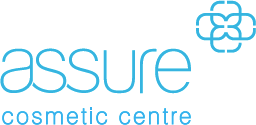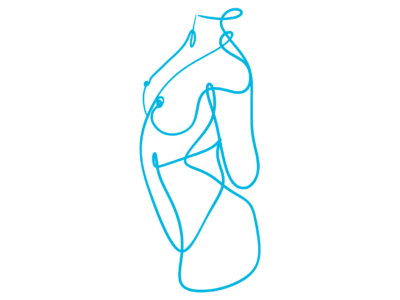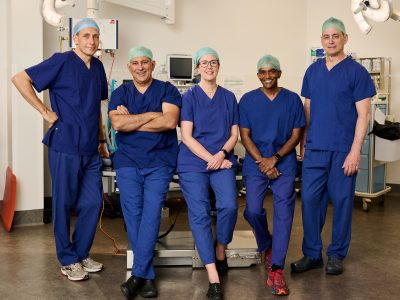Liposuction surgery in Perth or ‘suction-assisted lipectomy’ is a cosmetic procedure to remove localised collections of unwanted or stubborn fat. Liposuction can be used to for areas such as the thighs, hips, buttocks and abdomen, as well as the knees, ankles, arms, neck and under the chin.
Liposuction – referred to by some as ‘lipo’ – can also be referred to as lipoplasty or liposculpture.
Liposuction in Perth
While Perth liposuction can remove localised fat deposits, it is not a substitute for weight reduction nor a cure for obesity. It is ideal if you have localised deposits of fat that persist after diet and exercise.
Surgical lipectomy, which involves the removal of both excess skin and fat, might be recommended as an alternative to or in conjunction with liposuction.
Additionally, it is crucial to bear in mind that in cases where dimpled skin exists before undergoing liposuction, the dimples are likely to persist even after the procedure.
Book a Consultation
To find out if liposuction in Perth is right for you, the first step is to book an appointment with one of our Specialist Plastic Surgeons.
At Assure Cosmetic Centre, you’re in the care of a highly skilled medical team. Through your journey with us you will feel informed and comfortable and able to make the decision that is best for you.
Frequently Asked Questions
Liposuction
Liposuction is appropriate for patients who experience persistent, stubborn fat deposits despite their efforts with diet and exercise. It is essential to clarify that liposuction should not be viewed as a replacement for weight loss. While typically the skin tends to contract after liposuction, there are certain situations where an additional procedure might be necessary to address excess skin. Your Specialist Plastic Surgeon at Assure Cosmetic Centre is the best person to determine if your expectations are achievable.
In Perth, liposuction involves a high-powered suction pump attached to a cannula, which is inserted through a small incision where excess fat is removed. A pressure garment is usually worn for 2-3 months after surgery to decrease bruising and swelling and to encourage the skin to contract to its new shape. The overlying skin usually contracts following liposuction however, in some circumstances a procedure to remove excess skin may also be required. Multiple treatment sessions may be necessary depending on the number of areas requiring treatment.
Lymphoedema is a chronic condition resulting from impaired lymphatic system function, causing the build-up of fluid in the affected body parts, leading to swelling and discomfort. The primary treatment for lymphoedema involves a combination of complex decongestive therapy, which includes manual lymphatic drainage, compression therapy, exercise, and skin care. This is generally performed by a Lymphoedema Therapist or Lymphologist.
Lipoedema is a medical condition characterised by the abnormal accumulation of fat cells, primarily in the lower extremities, hips, and buttocks, leading to a disproportionate appearance. Conservative management options, such as compression garments, exercise, and proper nutrition, are typically recommended as the first line of treatment. In certain cases, liposuction with a Specialist Plastic Surgeon may be considered as a surgical option when conservative treatments have not yielded significant improvements or in advanced stages of the condition. The aim of liposuction for lipoedema is to reduce the excess fat and improve your quality of life. Various types of liposuction can be used effectively to reduce the excess fat however, we recommend water-assisted liposuction (WAL) as this technique appears to be more gentle to the lymphatics than other forms of liposuction and may therefore reduce the chance of recurrence and progression of the condition over time.
Making a diagnosis of lipoedema is very difficult and is usually based on history and clinical findings. Decisions regarding treatment should be made after thorough evaluation and discussion with your GP to determine the most appropriate approach based on the your specific condition and medical history. Your GP may refer you for radiology tests to assist with your diagnosis. You may also wish to see a Lymphoedema Therapist, as they can provide valuable information for making the diagnosis.
Once you have been given the diagnosis of lipoedema, your GP can provide you with a referral to our practice.
If your BMI is under 30, then diagnosing lipoedema is easier. If your BMI is over 30, making a diagnosis is still possible, but becomes more difficult. If your BMI is over 35, it is almost impossible to make an accurate diagnosis of lipoedema. In our practice, your BMI would need to be under 35 to be offered surgery for this condition.
Please be aware that currently this procedure does not attract any rebates from Medicare or private health insurance for either the consultation or surgery, as liposuction is deemed a cosmetic procedure.
In Perth, liposuction is performed in an accredited hospital under local or general anaesthetic. You can expect to be discharged that same day or in some cases after a short hospital stay. This will depend on your general health, the extent of the procedure, and your surgeon’s advice.
You will need to attend a post-operative consultation approximately 5-7 days after liposuction surgery, and again 7-14 days after surgery with subsequent post-op visits if required.
All plastic, cosmetic and reconstructive surgical procedures come with risks and potential complications. To ensure successful surgery, it is crucial to understand and minimise these risks. Whilst all measures are taken to mitigate risks, some risks are unavoidable.
All information on this page is general in nature – your Specialist Plastic Surgeon will discuss the specific risks and complications pertinent to your individual surgical procedure during your consultation. General risks for surgery are listed here.
Specific risks related to liposuction surgery include, but are not limited to:
- Thermal burn or heat injury: Ultrasound-assisted liposuction uses ultrasound waves to break up fat cells. However, if the ultrasound device is not used properly, it can cause thermal burns or heat injury to the skin or deeper tissues.
- Complications from the injection of anaesthetic fluid: Tumescent and super-wet liposuction use large amounts of anaesthetic fluid to numb the area being treated. However, if too much fluid is injected, it can lead to complications such as fluid accumulation in the lungs, which can be life-threatening.
- Excessive fluid loss: Liposuction can cause significant fluid loss. If too much fluid is lost, it can lead to shock, which is a life-threatening condition.
- Delayed healing: Liposuction can cause bruising, swelling, and pain. These side effects are usually temporary, but they may take several weeks to resolve. In some cases, healing may be delayed and may require further treatment.
- Friction burns or damage to the skin or nerves: The cannula, which is the thin tube used to remove fat, can cause friction burns or damage to the skin or nerves. This can lead to scarring, numbness, or other problems.
- Irregular skin surface, uneven contours, or rippling: If too much fat is removed, or if the skin is not elastic enough, it can lead to irregular skin surface, uneven contours, or rippling. This can be a permanent problem.
- Asymmetric or “baggy” skin surface: If the skin is not properly tightened during liposuction, it can lead to asymmetric or “baggy” skin surface. This can be a permanent problem.
- Damage to deeper structures like nerves, blood vessels, muscles, lungs, and abdominal organs: Liposuction can damage deeper structures, such as nerves, blood vessels, muscles, lungs, and abdominal organs. This can lead to serious complications, such as nerve damage, bleeding, infection, and death.
- Persistent or ongoing pain: Liposuction can cause persistent or ongoing pain. This pain may be due to a number of factors, including infection, nerve damage, or scarring.
- Persistent swelling in the legs: Liposuction can cause persistent swelling in the legs. This swelling is usually temporary, but it may be permanent in some cases.
While your surgeon will do their best to minimise their visibility, scars are an unavoidable outcome of any surgical procedure. Because of their small size (usually about 1 cm) scars are not usually significant after liposuction. If you have a history of keloid or hypertrophic scarring, it’s essential to inform your surgeon about this tendency before the procedure.
Although no major complications are expected with liposuction, you may have some bruising and swelling after surgery. Bruising usually subsides in 2-3 weeks and swelling within 8 weeks. Other complications, such as infection or prominent scars, are unusual. Slight irregularities, such as grooving under the skin, may occur and this could be accompanied by looseness of the skin – although the skin usually does contract over a period of time.
Your Specialist Plastic Surgeon will discuss what you can expect from this procedure. It is important to carefully follow your plastic surgeon’s advice to reduce the risk of complications.
Resuming your regular activities after surgery is a personal decision. Your surgeon will provide guidance on your specific timeline, but typically, most activities can be resumed within a few weeks. Some individuals may return to work after just 1 week, or in some cases, even sooner. To aid in reducing swelling and promote healing, wearing post-surgical compression garments may be necessary for up to 6 weeks.
It’s essential to highlight that each patient’s recovery process requires sufficient time, support, and proper postoperative care. Healing abilities and pain tolerance may vary among individuals, resulting in differences in recovery duration and the ability to engage in various activities.
An initial consultation with your Specialist Plastic Surgeon will cost approximately $250, which is payable in full at the time of booking your consultation. Your consultation will take approximately 30-60 minutes. If a Medicare item applies to your potential procedure then you will be entitled to a rebate from Medicare of approximately $80, providing you have a written referral from your GP or specialist. GP referrals are valid for 12 months and specialist referrals for 3 months.
Your Specialist Plastic Surgeon will provide an indication of the likely costs, such as your surgeon’s fee, anaesthetist’s fees and hospital and theatre fees. Your surgeon’s fee includes all post-operative care and nurse dressings. Pricing will vary from case to case, but an indicative range of your surgeon’s fee is $2,000 to $5,000 excluding GST per area and depending on time required in theatre. Anaesthetist, hospital and theatre fees are additional.
There may be Medicare and private health insurance rebates available for certain liposuction procedures in Perth depending on strict Medicare eligibility criteria. Your surgeon can provide you with more information, but you would then need to talk to your private health insurer to determine exactly how much cover they will provide and confirm what your final out-of-pocket costs will be.
A good starting point is to book a consultation with one of our experienced Specialist Plastic Surgeons at Assure Cosmetic Centre. You will have the opportunity to discuss your concerns and ask questions. You will be provided with detailed information regarding the treatments or procedures that can help you, the expected outcomes, and the costs involved. Click here to make an appointment.
The Australian Society of Plastic Surgeons (ASPS) website is a helpful and reliable source of information online. Their website is an excellent place to research a range of surgical procedures and non-surgical treatments, and view video animations.
Utilising a search engine can also be beneficial in finding relevant information on these topics.
For patients seeking breast augmentation, the Therapeutic Goods Administration (TGA) breast implant hub also has several documents regarding breast implants, covering various subjects such as Breast Implant Associated-Anaplastic Large Cell Lymphoma (BIA-ALCL), consumer inquiries, and related matters.



